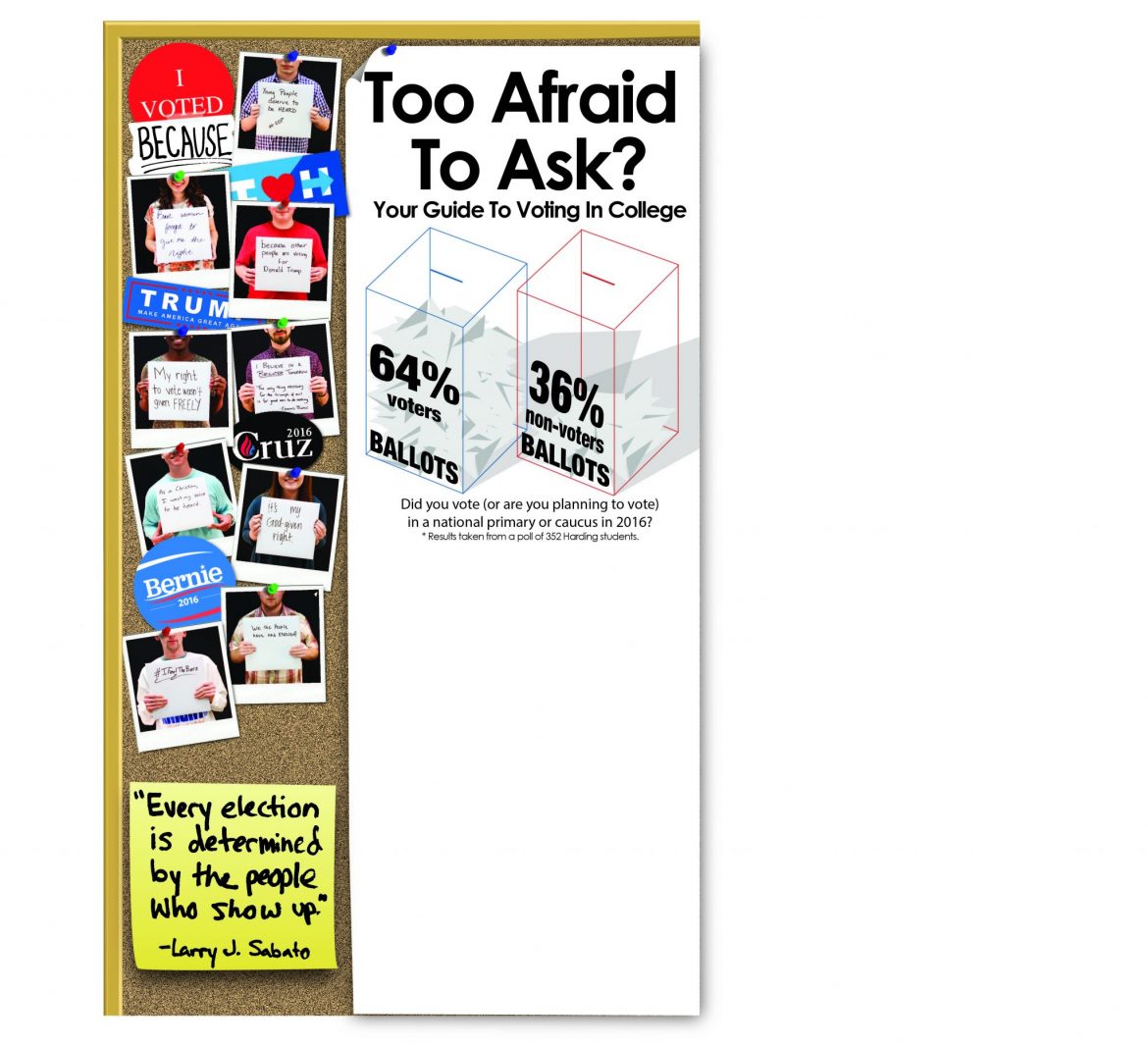I’m sure you are aware, but 2016 is an election year. Whether it’s laughing at the latest Bernie Sanders meme on your Facebook feed or checking your CNN or Fox app for updates on the polls, this campaign season has dominated the national media.
According to a March 8 Pew Research article, 29 percent of eligible voters actually voted in the primary and caucus elections that have already occurred. Soaring above the national statistics, 63.6 percent of Harding students in a survey conducted by The Bison have already voted in their primary or caucus election or plan to do so. Either way, a significant portion of eligible voters are not voting.
So why are not people voting? According to The Atlantic, there are many reasons why citizens do not vote. In 2008, 17.5 percent of the people who did not vote reported that they were too busy, 13.4 percent said they were not interested in voting, 12.9 percent said they did not like their options, 8.8 percent reported being out of town and six percent had some type of registration problem. Of that six percent, young people (ages 18-24) and bachelors-degree holders were most likely to have registration problems. That means you, a college student, are most likely to have voter’s registration issues.
Look, I understand. Voting can be daunting and somewhat difficult, especially if you are not attending college in your home state. Directions for registration and absentee requests are not highly publicized, and unless your parents, relatives, or friends taught you what to do, you are basically out of luck. For many of you, the opportunity to vote in the primary elections has passed, but all of you will be able to vote in the general election in November if you follow this four-step process. With the help of the Election Assistance Commission (EAC), I’ll hopefully be able to give you the information you need in order to register to vote and request an absentee ballot.
Step 1 – Do not be afraid to ask questions and do your research. This may seem trite, but too many people are afraid to ask for help because they feel scared for not knowing how to register to vote or request an absentee ballot. Do not apologize for trying to be a good citizen.
Step 2 – Register to vote. Before you’re allowed to vote, you need to register. Voter registration is normally handled by your secretary of state, and their website should have a link to an online voter’s registration. If an online form is not available, they should have a printable version of the form or a link to request a form in the mail. The EAC’s website features an interactive map if you’re having trouble finding them. Most states require that you register to vote at least a month before an upcoming election. After completing a registration form, you should receive a voter’s confirmation card through the mail.
Step 3 – Request an absentee ballot. Once you register to vote and receive your voter’s confirmation card, you may request an absentee ballot. An absentee ballot is sent through the mail to people who cannot make it to their precinct’s polling place on election days. County clerks are usually responsible for running elections, and your clerk’s website should feature a link to request an absentee ballot — either an online or a printable version that you can mail in. You may have to present your social security number or driver’s license number to confirm that you are a registered voter. Most clerks require that you request your absentee ballot at least a week before the election.
Step 4 – Vote. Your absentee ballot will come in the mail in a large packet that includes instructions and an envelope to mail in your ballot with the postage already paid. It will request that you fill it out immediately when you receive it. Make sure that you are in a private place with little distraction and have a black pen with you. When you are finished, give the closed envelope to the nice mail ladies at the U.S. Postal window in the Student Center, and your ballot will be on its way back to your county clerk.
